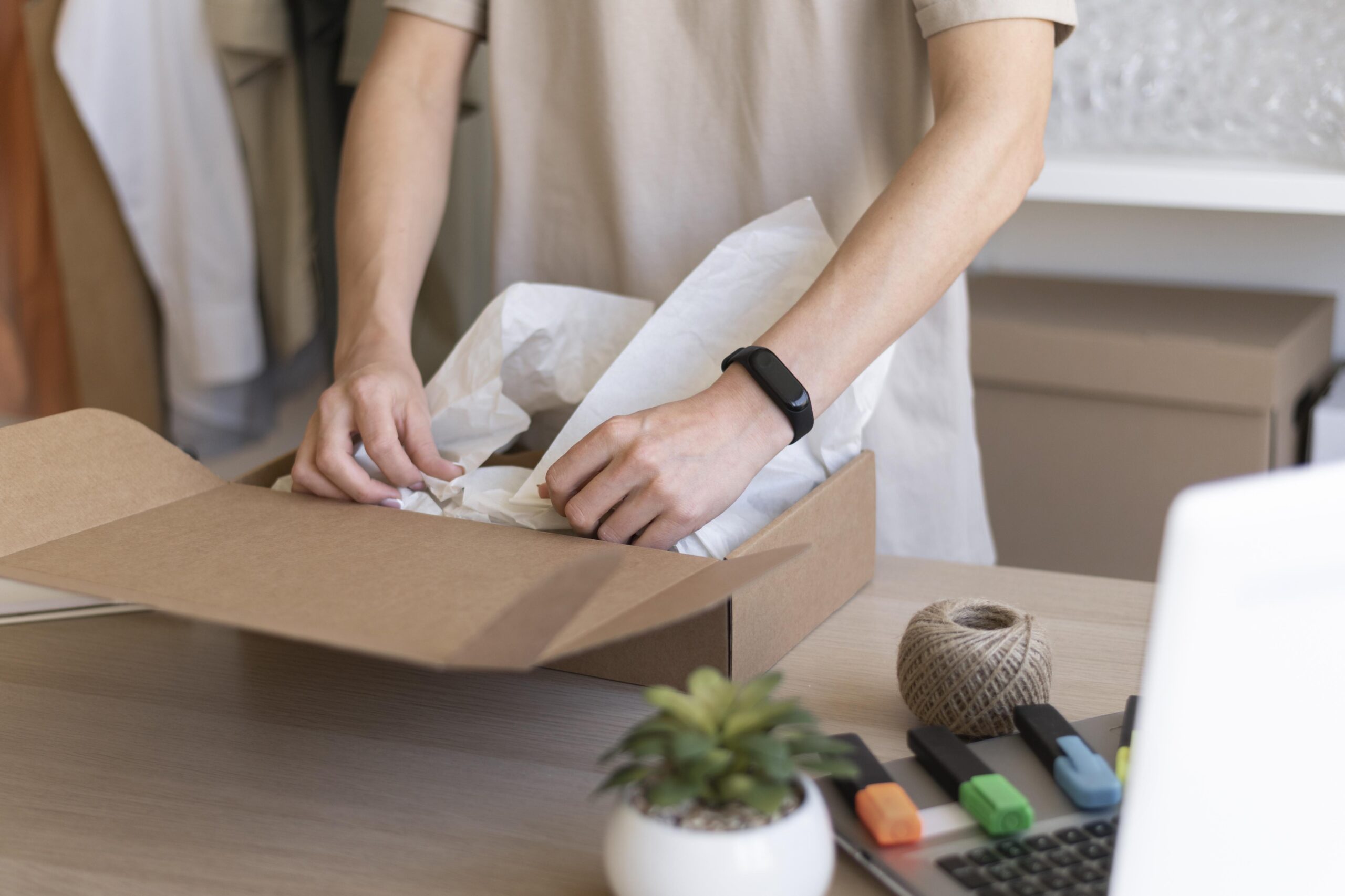Eco-Friendly Packaging Solutions for Small Businesses
Introduction
In today’s business landscape, sustainability is no longer just a trend — it’s a necessity. Customers are increasingly aware of the environmental impact of their purchases, and many are actively seeking out brands that align with their values. For small businesses, adopting eco-friendly packaging solutions is a powerful way to appeal to this growing market while also reducing their environmental footprint.
While large corporations often have bigger budgets to invest in sustainability, small businesses can also make a big impact by making thoughtful choices about their packaging. The good news? Eco-friendly packaging doesn’t have to be expensive or complicated. With the right strategies, small businesses can reduce waste, save money, and strengthen their brand image all at once.
In this guide, we’ll explore the best eco-friendly packaging solutions for small businesses, how to implement them, and why making the switch is not only good for the planet but also good for business.
Why Switch to Eco-Friendly Packaging?
1. Customer Demand for Sustainability
Consumers are becoming more environmentally conscious. Studies show that a majority of buyers are willing to pay more for products that come in eco-friendly packaging. In fact, younger generations like Millennials and Gen Z are leading the charge — they actively seek out sustainable brands.
For small businesses, this means that switching to sustainable packaging isn’t just a moral decision — it’s a smart business move. It can attract new customers, increase loyalty, and help your brand stand out in a crowded market.
2. Environmental Responsibility
Traditional packaging materials like single-use plastics and Styrofoam take hundreds of years to break down, releasing harmful chemicals into the environment. By switching to biodegradable, compostable, or recyclable alternatives, small businesses can significantly reduce their carbon footprint and help combat climate change.
3. Cost Savings in the Long Run
While eco-friendly packaging may sometimes have a higher upfront cost, it can lead to savings over time. For example, using lightweight materials can lower shipping costs, and buying in bulk can reduce per-unit expenses. Plus, as demand grows, eco-friendly materials are becoming more affordable.
4. Stronger Brand Image
Your packaging is often the first physical interaction a customer has with your brand. If your packaging reflects your values — such as sustainability and care for the environment — it can create a positive first impression and encourage repeat purchases.
Types of Eco-Friendly Packaging Solutions
When thinking about eco-friendly packaging, it’s important to remember that “eco-friendly” can mean different things — biodegradable, compostable, recyclable, reusable, or made from renewable resources. Here are the most effective types for small businesses:
1. Recycled and Recyclable Paper
-
Best for: Food wrap, shipping boxes, product labels, bags.
-
Benefits: Affordable, widely available, easily customizable with printing.
-
Example: Kraft paper mailers or recycled cardboard boxes for e-commerce packaging.
2. Compostable Packaging
-
Best for: Food service, single-use items.
-
Benefits: Breaks down naturally into non-toxic components within weeks or months.
-
Example: Cornstarch-based containers, bagasse (sugarcane fiber) trays, compostable poly mailers.
3. Plant-Based Plastics (Bioplastics)
-
Best for: Food packaging, transparent containers, bottles.
-
Benefits: Made from renewable plant sources like corn or sugarcane.
-
Caution: Some need industrial composting facilities to break down properly.
4. Reusable Packaging
-
Best for: Subscription services, premium products.
-
Benefits: Encourages customers to reuse, reducing waste over time.
-
Example: Cloth bags, glass jars, tin containers.
5. Minimalist Packaging
-
Best for: Almost any product type.
-
Benefits: Less material used, less waste produced, cost-effective.
-
Example: Printing directly on the box instead of using separate labels, or using paper tape instead of plastic.
6. Water-Based Inks for Printing
-
Best for: Any printed packaging.
-
Benefits: Non-toxic, easier to recycle than petroleum-based inks, produces vibrant colors.
Cost-Effective Strategies for Small Businesses
Switching to sustainable packaging doesn’t have to break your budget. Here’s how small businesses can make the transition without overspending:
1. Start Small
You don’t need to replace all your packaging overnight. Begin with one or two eco-friendly alternatives, such as switching from plastic bags to paper bags or replacing bubble wrap with shredded recycled paper.
2. Buy in Bulk
Ordering larger quantities can reduce costs per unit. Partner with other small businesses in your area to place bulk orders and share the savings.
3. Use Local Suppliers
Local suppliers not only reduce transportation emissions but can also offer competitive pricing and faster delivery times.
4. Reduce Packaging Size
Smaller packaging means less material, lower costs, and reduced shipping fees.
5. Encourage Customer Participation
Offer discounts or incentives for customers who return reusable packaging or bring their own bags.
Case Studies: Small Businesses Going Green
Case Study 1: A Coffee Shop’s Compostable Revolution
A small coffee shop in California replaced its plastic cups and lids with compostable alternatives made from cornstarch. While the cost per unit was slightly higher, the business marketed the change on social media, attracting environmentally conscious customers. Sales increased by 15% in just three months.
Case Study 2: An E-Commerce Brand’s Minimalist Makeover
An online skincare brand switched from using colored, laminated boxes to plain Kraft boxes printed with soy-based ink. They reduced packaging costs by 20% and received positive feedback from customers who appreciated the minimal waste.
Challenges and How to Overcome Them
1. Higher Upfront Costs
Solution: Start small, buy in bulk, and market your eco-friendly switch to attract new customers who value sustainability.
2. Limited Availability
Solution: Explore online suppliers, consider importing sustainable materials, or collaborate with local businesses to pool resources.
3. Customer Education
Solution: Use your website, social media, and packaging itself to educate customers about the importance and proper disposal of eco-friendly packaging.
Step-by-Step Guide to Transitioning to Eco-Friendly Packaging
-
Audit Your Current Packaging – Identify which materials you use and how much waste they generate.
-
Set Clear Goals – Decide whether you want to go fully plastic-free, reduce waste by 50%, or focus on compostable options.
-
Research Options – Compare costs, durability, and supplier reputation.
-
Test Before Full Implementation – Try eco-friendly packaging on a small scale to gather feedback.
-
Market Your Switch – Tell your customers why you made the change — they’ll appreciate your commitment.
-
Monitor and Adjust – Track costs, customer feedback, and environmental impact.
Future Trends in Eco-Friendly Packaging
-
Edible Packaging: Made from seaweed, rice paper, or starch-based materials.
-
Smart Packaging: Embedded with QR codes that tell customers how to recycle or reuse.
-
Mushroom Packaging: Grown from agricultural waste and mycelium, compostable in home gardens.
-
Refill Stations: Encouraging customers to bring their own containers.
Conclusion
Switching to eco-friendly packaging solutions isn’t just about protecting the planet — it’s about future-proofing your business. Small businesses that embrace sustainability can enjoy stronger customer loyalty, reduced costs in the long run, and a competitive advantage in an increasingly eco-conscious market.
By starting small, getting creative, and marketing your commitment to the environment, your business can make a big difference — both for your bottom line and for the planet.














Post Comment